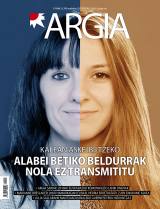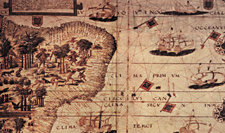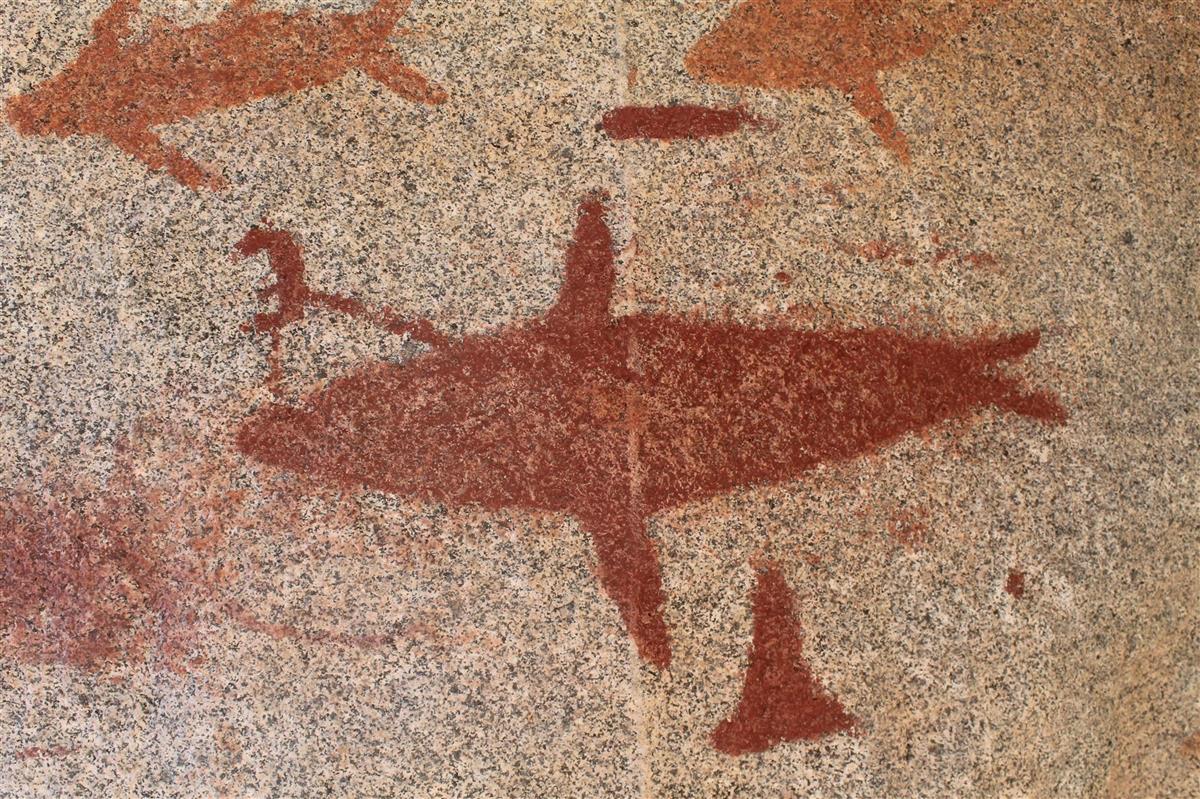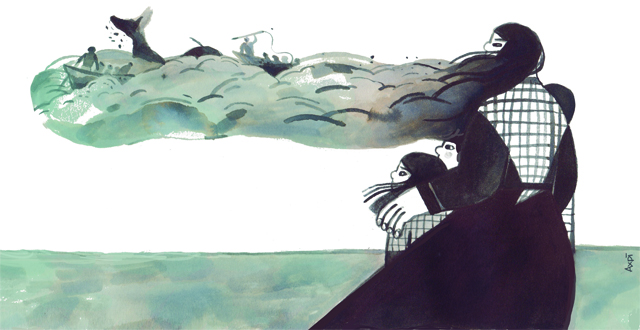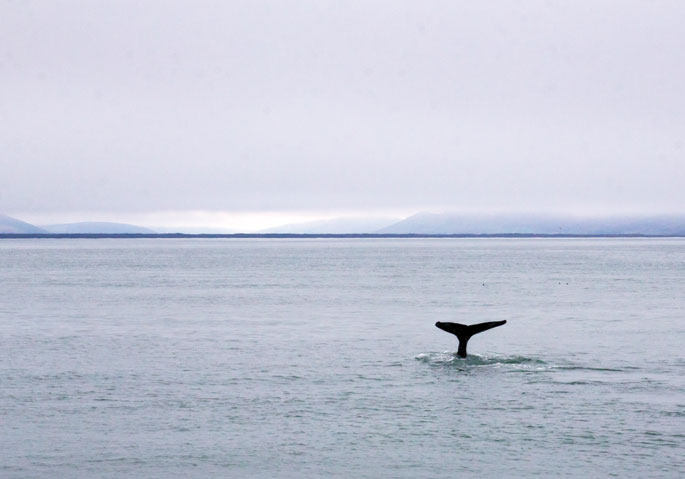"We've had more connection than we thought with Canada's indigenous peoples for a long time."
- Iratxe Andueza travels through Canada. The Ría Maritime Museum of Bilbao is studying the tools that Basque fishermen brought to the area in the sixteenth century. He has had the opportunity to get to know pidgina very closely. He now knows how the indigenous people live and cannot make a good assessment.
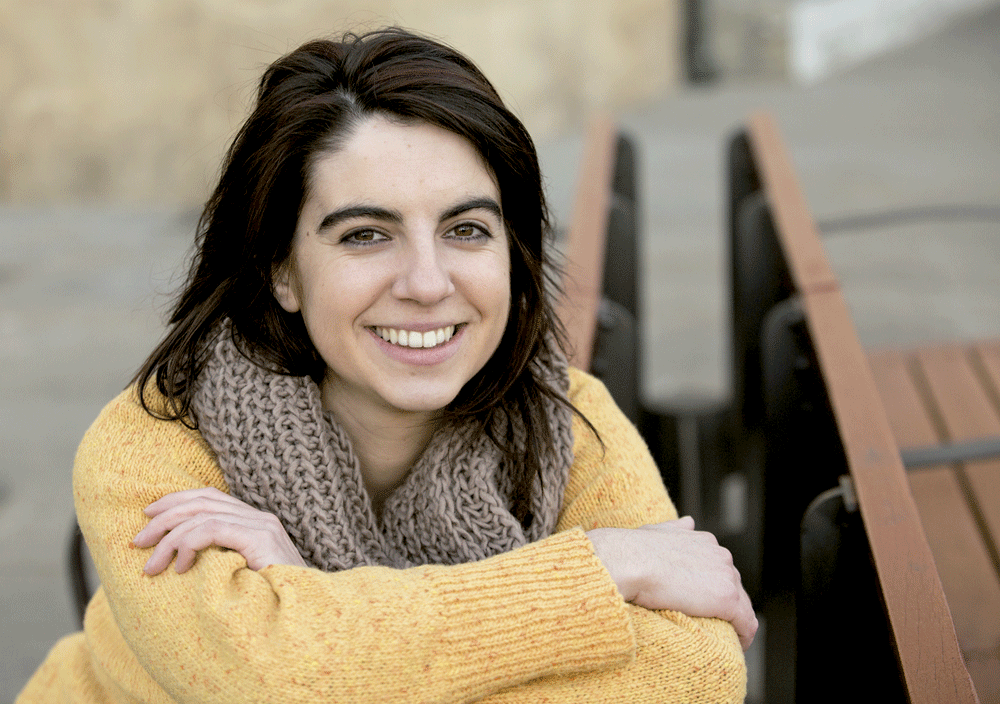
Garraldan eta Iruñean bizi eta ikasi ondoren, Baionan Euskal Ikasketak egin zituen. Ikasturte honen hasieran Kanadara joan da, Quebeceko Laval Unibertsitatera, bertako Lehen Nazioen indigenen eta euskaldunen artean izaniko harremanen inguruko ikerlana egitera. XVI. mendean hemengo arrantzaleek nolako tresnak eramaten zituzten aztertzen ari da zehazki. Jauzarrea euskal kulturaren azterketa eta zabalkunderako funtsak 2011tik antolatzen dituen nazioarteko biltzarretan aritzen da laguntzaile gisa.
Your journey is short but compact, right?
When I was a child, I lived in Garralda for two years, and then, during the week in Pamplona, because my mother was a professor at ikastola San Fermin and my father was also working here. When I finished high school, I went to Baiona to college, to study Basque Studies. Anthropology, Sociolinguistics, Sociology, writing courses, History, Geography, Basque, French… you learn everything. It's a very nice career. Three years later, in the early fall, I went to Canada for two years, in principle.
Why Canada?
I have a partnership with Jauzarrea, the fund for the study and dissemination of Basque culture since 2011. At Oreina Urkian Kanata I had the opportunity to learn about the relations between the Basques and the indigenous people of Canada. During these years they have given more than 24 lectures on this subject and I found it a very appropriate subject for the realization of the master's degree. I've gone to Laval University of Quebec to do a two-year graduate course.
What exactly is it that you learn?
In this postgraduate course one learns how the organization of their peoples is, as well as ethnology, archaeology, etc. These are general studies, similar to those carried out here in the Basque Studies career, in Vitoria or in Baiona.
At first you have to present the project and then, depending on that, you can choose the subjects you want. The name of my work is very general: The transmission of objects between the First Nations of Canada and the Basques in the sixteenth century. Laurier Turgeon, a well-known ethnology professor, is the director of my project. He was the one who researched the 17th century relationship very well, and I'll go a little further back to the 16th century, which was the time when the relationship was closer.
Ethnology and material patrimony is the starting point of my research; the relationship between the Basques and their indigenous people, based on the exchange of objects. Still, I would like to go beyond material heritage and analyze the symbology of objects and their influence on local society. I also want to look at immaterial heritage.
I will be in Quebec until May and I intend to immerse myself in the archives of Oñati, Bordeaux and Navarra in summer, before coming back. I think I will find more information on this issue than here.

What are the objects you're analyzing?
Those usually found in the graves: axes, copper containers… tools in general. Objects moved from here. To start with, I'm creating a context, collecting the material that's been published so far. Many things have been researched in archeology, toponymy, genetics… but it is necessary to locate in time and clarify the causes.
Who lived there then?
There are many indigenous peoples, but on the Atlantic shore the main ones were the Innus, Beothuk, Abenakis, Cris, Mi’kmaq, Iroqueses and Innuit. They are called “the first nations.” On the east coast of Canada, the Basques were especially related to the peoples living in Newfoundland, Labrador and the Gulf of San Laudendi. My’kamaq were called “whites”, perhaps because they had a certain similarity with the Basques, perhaps in the color of the skin. In general, the names or words whose end is -quois (souricoa – blanca – and iroquoa) are related to the Basque language, since there is no such suffix in Canadian languages.
These relations are prior to Columbus's arrival, who found America?
Good question. The first documented data dates back to 1342 and there is a document from San Juan de Luz of 1372 that talks about exchanges between Basques and transmarines. The first contemporary document in which reference is made to the Basques is 1517. We have had more connection than we thought with the indigenous peoples of Canada for a long time.
What were their relationships like?
Beyond trade agreements, I would say that there has been a good relationship. Proof of this is that the words adeiskidex (friend) and homeland (brother) are found in their dictionaries. These words have been introduced into their languages over the centuries. In addition, the Basques were very skilled in fishing and shipbuilding, and those there were taught some techniques to build their boats. The documents mention, for example, that some Basque stayed there to learn the language and that someone from the Mi’kmaq nation from there came to Euskal Herria and stayed here.
On the other hand, there are a number of names on the Canadian Atlantic coast in toponymy: Nouvelle Biscaye, Pirénées, Port Savalette (Zabaleta), Cap aux Basques, Île aux Basques, Port-au-chois (Portutxoa)… Toponymy shows us how far we got.
Much remains to be investigated, but it is clear that the Basques did not colonise it. The French, in the seventeenth century, went from the commercial relationship to total colonization.
“The indigenous people of Canada are not socially well valued. Only tourism initiatives are given prominence, in everything else not.”
How did the Basque pidgin emerge?
Basque fishermen were the main visitors of the 16th and 17th centuries in Canada. We have evidence of this in a number of words of Basque origin, collected in different languages of their nations. In addition, they created a language of commercial treatment between the Basques and their nations.
Upon arriving in Canada, the Basques found three linguistic families: the Inuktitut, who spoke the Inuits of Labrador, the Iroquese languages and the Algonquin languages. Between the latter and the Basque Country, a special pidgin emerged. Pidgina is a practical and basic language for understanding between two communities of unrelated speakers, based on the structure and vocabulary of a language. The well-known example is that of “The Better Priests,” when they said goodbye, they asked the Canadians, “How?” and they responded like this.
The reflections on this pidgin and the linguistic footprints that have been found are very important for the studies to be carried out in the language, as well as for those who study the relations that have been maintained between the Basques and the nations of Canada.
Could you give more examples of pidgina?
Let me quote two words, because of the importance of their meaning, because they can be a good relationship. Marc Lescarbot mentioned in 1607 that the word adesquidex was used by Mi’kmaq nationals. His similarity with the word friend in Basque and the absence of similar words in the language in which my’kmaq speaks has led to the conclusion that Peter Bakker has Basque etymology. Bakker has concluded that the word "ania" also has a Basque etymology. In 1630 the people of Montagnais joined the word they used with the word Basque brother. In his language is said the brother nichtai or nichim.
In the opinion of Peter Bakker, Adesquide and Ania are the result of a Basque pidgin. The inhabitants of various nations of Canada spoke, between approximately 1540 and 1640. It's the oldest non-indigenous pidgin in America.
Other examples that can be found are kessona (man), maki (palo), atouray (shirt), orignac, orignal (oreina), matachi (coin), pilot (guide), adesquidex/s (friend), chabaya (wild), endia (fat), chirca-pata (sword).
The fact is that the other Europeans who came there also did this pidgin. It is therefore believed that it was used between the Canadians themselves and the Europeans, not only with the Basques. It's documented in 1497. In the chronicle of John Cabot’s journey (Genoa, Italy) it is mentioned how my’kmaq used pidgina with them.

Council at Cape Breton University, Canada,
in Nova Scotia. Photo: Xabi Otero.
How are you looking for the information trail?
It is very difficult to find exact data, as normally the Basques did not appear on official travel. Fishing vessels were sent, but not normally on trips organised by major powers such as Portugal or France. In addition, we are talking about the time of the conquest of Navarre and it is very difficult to follow the footprints of the Basques. It has happened to me to find the Basques as French in some documents. Sometimes, looking at where the fishing boats departed from or looking after the surnames, Basque remains are discovered.
How are indigenous peoples in Canada today?
In Canada, more than 630 villages of origin live and each has its culture, language and customs. They form the First Assembly of Nations and, according to the census prepared by the Government of Canada, there are 698,025 indigenous people. They live in a very poor state. Until the 1980s, the government did not meet with them. These ethnic groups are alive, but their situation is not easy because they have suffered secular oppression. The loss of linguistic and cultural identity is evident.
I lived in Otawa a few years ago for a month and had the opportunity to meet my’kmaq and his culture. In their values, respect for nature, hunting, animals and people is the most important thing. That's what they're trying to convey from generation to generation.
Have you seen similarities with the indigenous people here?
Yes, in traditional values and in relation to the current situation of dependence. They, in addition, socially are not well valued. Only initiatives relating to tourism are given priority, incidentally, nothing.
It's a system as curious as it is oppressive. To be officially recognized as indigenous, they must register for a census and live in a reserve. The only positive thing is that there are taxes that do not pay, everything else is not in your favour. Having a credit card or applying for a loan, for example, is not easy for them. Their languages and their cultures are oppressed because every day, as a nation, they depend on another. However, some speak against them, say they are privileged, because they are free from certain causes.
What do we have to learn from them?
I would say it's very interesting to see how they're working. They have a great conscience and fight for their rights. Many of them, for example, have refused to register on the lists and there are movements for not participating in the elections. Opinion on civil disobedience is widespread.
“Islandia, Kanada, Ternua, Labrador eta San Laurendira joaten ziren euskaldunak arrantzaleak eta merkatariak ziren. Balea, bakailaoa eta itsas txakurren azala ekartzen zituzten. Hemengo kandelak pizteko erabiltzen zen balearen olioa ere handik ekartzen zuten ‘Europa argitzeko’”.
“Quebecen egun hauetan zero azpitik 26 gradu ditugu, edo hotzago. Hala ere, Garraldako etxetzar horietan hotz handiagoa egiten du Kanadan baino! Jendea oso atsegina da. Berehala hasten zaizkizu hizketan kalean eta toki guztietan. Beti daude laguntzeko prest eta interes handia dute Euskal Herriaz. Txarrena da nahiko garestia dela eta oraingoz ez dudala inolako bekarik lortu, baina oso garrantzitsua da niretzat ikasketak in situ egitea”.
Ez hartu harririk, ez teila zatirik, ez lorerik… ezer! Gure zapatilen arrastoa da zapalduko dugun lurrean utziko dugun bakarra. Ez egin harri pilarik, etorkizuneko arkeologoen lana baldintzatuko duzue eta. Horixe esan zigun Jason Edmundsek ondare kulturalaren zaintzaren... [+]
Bertaratutako euskaldunek Gran Bahia deitu zioten duela mende asko Ternua eta Labrador kasik bateratzen diren Belle Isleko itsasarteari. Arrantzaleek ustezko badia erraldoiaren sarrerako penintsula eta irla-artean ezarri zituzten baleak ehizatu eta euren olioa ateratzeko... [+]
Europako ontziak Ternua eta Labradorreko kostetara baleak eta bakailua arrantzatzera etortzen hasi zirenean, duela jada bost mende, ba omen zen Atlantiar kostetako badiatan nolabaiteko ohore kode bat. Galeoi edo ontziak leku bat hartu eta izendatzen bazuen, beste inork ezingo... [+]
Euskal balezaleen triskantza duela ia laurehun urte jazo zen hilketa ikertzea helburu duen dokumentala da. Txuri eta beltzik gabeko istorio bat, zuria esateko hamaika hitz dituen herrian.
Islandian oraindik geratzen da euskal baleazaleen aztarnarik, baita duela 400 urteko triskantzaren oroimenik ere. Bertako buruzagi baten aginduz hil zituzten hainbat arrantzale euskaldun, eta erreportaje honetan kontatu dizugu gertaturikoa. Argazkion bidez iraganean atzera egin... [+]









